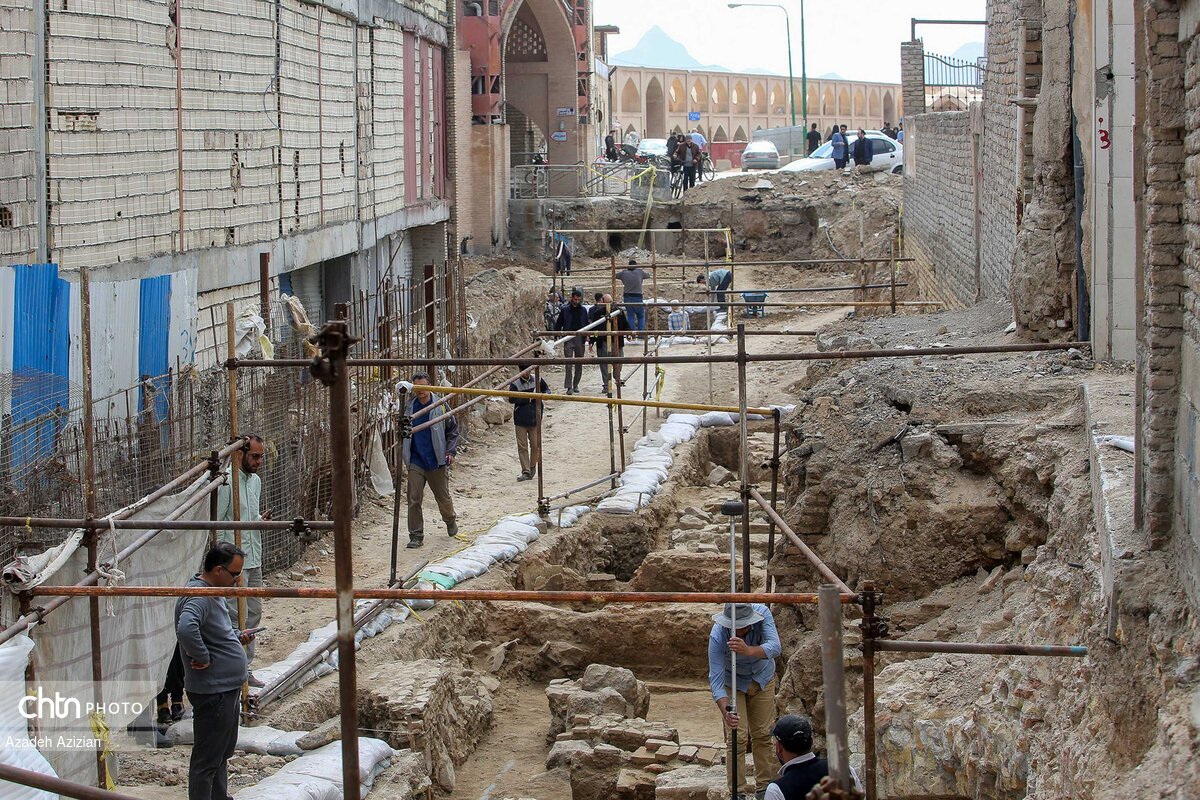Isfahan dig unearth relics dating from early Islamic to Qajar eras

TEHRAN – In a recent excavation, a team of Iranian archaeologists has unearthed an array of ruins and relics in Isfahan estimated to date from the early Islamic era to the Qajar epoch.
The project, led by archaeologist Ali Shojaei Isfahani, was conducted on the Kamar-Zarrin passageway after a routine urban project revealed signs of an ancient site.
According to the archaeologist, the site’s location near the UNESCO-registered Jameh Mosque of Isfahan adds extra charm to its cultural heritage.
Kamar-Zarrin has long been earmarked for development projects, part of the city’s efforts to expand commercial centers while preserving its rich cultural heritage. However, beneath the surface, archaeologists have unearthed artifacts that offer glimpses into the city’s storied past.
The first archaeological season has just come to an end after the site underwent laser scanning and a special mapping project.
“The first phase of excavation was fruitful, with significant findings ranging from the [early] Islamic era to the Qajar period,” Shojaei said.
“However, much remains to be uncovered, and we are now preparing for the next phase of excavation.”
He said that among the notable discoveries are remnants of ancient kilns used for pottery making, including a remarkably preserved furnace that has not been found elsewhere in Isfahan.
Shojaei emphasized the importance of these findings, highlighting the significance of the Kamar-Zarrin area in the city’s historical landscape.
“We have not encountered such ancient artifacts of this scale in other historical sites [of the city] before, indicating the importance of this area,” Shojaei noted.
“Every inch of this region holds cultural treasures, especially given its proximity to the Jameh Mosque, a pivotal landmark in Isfahan’s history.”
“While we delve deeper into Isfahan’s past, we must also confront the realities of modernization and urbanization,” Shojaei noted.
Moreover, the archaeologist voiced concern over the fate of Isfahan’s cultural heritage in the face of new constructions.
“Recent construction activities pose a threat to our cultural heritage, raising questions about the preservation of our city’s history.”
The ancient city of Isfahan is celebrated not only for its magnificent historical monuments but also for the life-giving presence of the Zayandeh-Rood River, which has long graced the city with its original beauty and fertility.
Isfahan has earned the enduring moniker of Nesf-e-Jahan, translating to “half the world,” signifying that to behold it is to behold half the world. During its zenith, it stood as one of the largest cities in the region, boasting a population of nearly one million.
The serene azure tiles adorning Isfahan’s Islamic edifices, coupled with the city’s grandiose bridges, provide a striking juxtaposition against the arid expanse of the surrounding Iranian countryside. At the heart of the city lies the vast Imam Square, renowned as Naghsh-e Jahan Square, meaning “Image of the World,” a monumental testament to urban planning. Constructed in the early 17th century, this UNESCO-recognized square spans an impressive 500 meters by 160 meters and hosts some of the most captivating sights in Isfahan.
AM
Leave a Comment